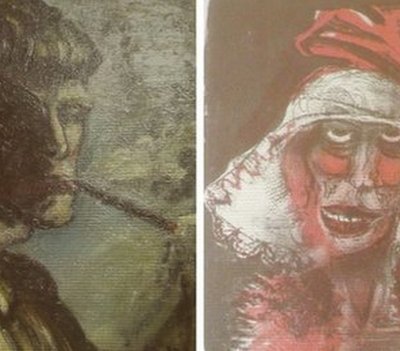Our daily round-up of news from the art world
Art thieves jailed over £57 million museum thefts | Fourteen men associated with the Rathkeale Rovers gang have been handed prison sentences ranging from 15 months to six years and eight months for a series of thefts and attempted thefts at museums across the UK. The thieves were behind heists at institutions including Cambridge’s Fitzwilliam Museum, in which they stole some £57 million worth of Chinese antiques and rhino horn, which police suspect may have been ‘stolen to order’. According to Detective Superintendent Adrian Green of Durham Constabulary, members of the Ireland-based gang may still be at large in the UK. He has warned museums to remain vigilant in the event of further raids.
Edinburgh International Festival and BP to part ways | Following the end of BP’s sponsorship arrangements with the Science Museum and the Tate group, Edinburgh International Festival has become the third major UK cultural institution to part ways with the oil company. Details remain scarce, but EIF has told Art News Daily that ‘BP has not renewed its support of the International Festival this year. We are grateful to them for their long term support of the Festival, but all sponsorship arrangements end eventually.’
Swedish court finds Wikimedia in violation of copyright law | In a blow to picture researchers everywhere, Sweden’s highest court has ruled in favour of the country’s Visual Copyright Society (BUS), which has sued Wikimedia Sweden over an ‘art map’ website it had constructed. BUS, which represents the interests of many artists, designers and illustrators, accuses Wikimedia of making photographs of artworks in public places available royalty free, without the consent of the artists who created them. Wikimedia Commons, which is part of the same not-for-profit foundation as Wikipedia, allows individuals and organisations to download and use images from its database for a number of purposes, including press use. According to the Supreme Court,‘such a database can be assumed to have a commercial value that is not insignificant. The court finds that the artists are entitled to that value.’ Wikimedia, meanwhile, has described the court’s ruling as ‘behind the times and insufficient faced with the digital reality we all live in.’ If the ruling sets a precedent, there may be significant changes to the manner in which images are sourced for online content.
Norwegian police arrest two in connection with Munch theft | A spokeswoman for Norway’s police force has announced that two men have been arrested in connection with the theft of an Edvard Munch lithograph from an Oslo art dealer. In November 2009, thieves broke into the Nyborgs Kunst gallery, having smashed the windows with a rock, and stole a lithograph worth an estimated 2m kroner. (£170,500.) The police have not yet named the individuals they have detained, but Norwegian media reports suggest that both are known to have criminal records. However, they are not suspected of having carried out the theft themselves.
Leonard A. Lauder awarded inaugural Whitney Collection award | The Whitney has named its Chairman Emeritus Leonard A. Lauder as the recipient of its inaugural Whitney Collection Award. Since 1975, Mr Lauder has personally donated 760 works of art to the museum, and facilitated the acquisition of a further 188. ‘Leonard Lauder is one of the greatest benefactors in the Whitney’s history,’ says director Adam D. Weinberg, ‘[…] he has always believed that the quality of a collection and the unique mix of its holdings are essential to the life force of a museum.’ In recognition of his contribution, the Whitney’s new building in the Meatpacking District will be renamed in his honour.
Recommended reading – ‘toxic provenance’ | Writer Eve Kahn has written a spectacular piece for the New York Times, tracing the murky provenance of a Jan Steen painting once owned by her mother-in-law’s companion. Not only is it a gripping read, it also goes some way to explaining the ‘toxic’ status accorded to works of art that may or may not have been looted by Nazi and collaborationist forces during the Second World War.



